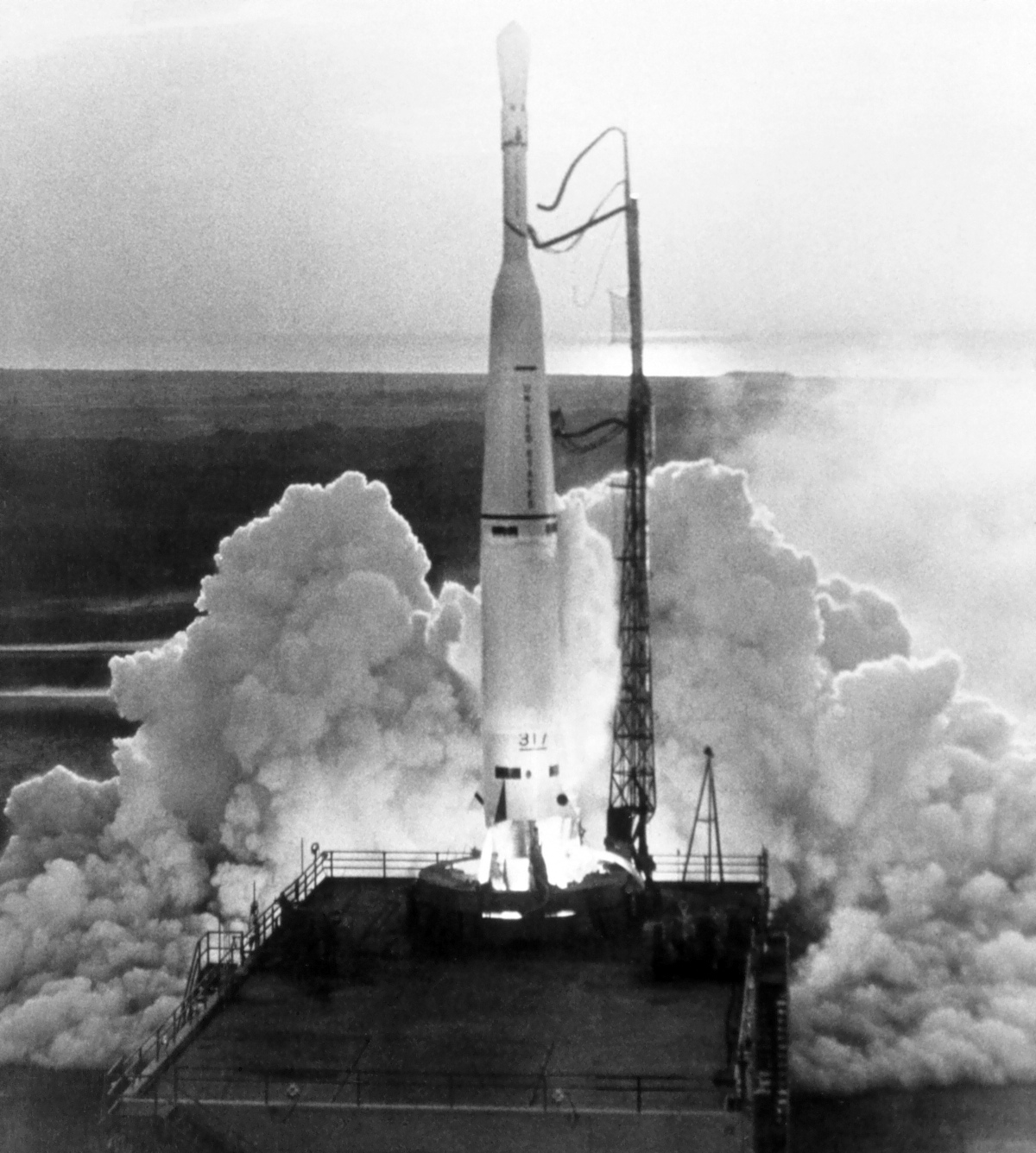
Thor Delta
In-activeMcDonnell Douglas (MDC)
May 13, 1960
Description
American orbital launch vehicle. Commercial name for the military's Thor-Delta.
Specifications
-
Stages
3 -
Length
31.0 m -
Diameter
2.44 m -
Fairing Diameter
2.44 m -
Launch Mass
54.0 T -
Thrust
667.0 kN
Family
-
Name
Thor Delta -
Family
― -
Variant
Delta -
Alias
― -
Full Name
Thor Delta
Payload Capacity
-
Launch Cost
$7270000 -
Low Earth Orbit
226.0 kg -
Geostationary Transfer
Orbit
― -
Direct Geostationary
― -
Sun-Synchronous Capacity
―
McDonnell Douglas
Commercial
None
MDCNone
Thor Delta | Tiros 6
McDonnell Douglas | United States of AmericaCape Canaveral SFS, FL, USA
Sept. 18, 1962, 8:53 a.m.
Thor Delta | Telstar 1
McDonnell Douglas | United States of AmericaCape Canaveral SFS, FL, USA
July 10, 1962, 8:35 a.m.
Thor Delta | Tiros 5
McDonnell Douglas | United States of AmericaCape Canaveral SFS, FL, USA
June 19, 1962, 12:19 p.m.
Thor Delta | Ariel 1
McDonnell Douglas | United States of AmericaCape Canaveral SFS, FL, USA
April 26, 1962, 6 p.m.
Thor Delta | OSO 1
McDonnell Douglas | United States of AmericaCape Canaveral SFS, FL, USA
March 7, 1962, 4:06 p.m.
Thor Delta | Tiros 4
McDonnell Douglas | United States of AmericaCape Canaveral SFS, FL, USA
Feb. 8, 1962, 12:43 p.m.
Thor Delta | Tiros 2
McDonnell Douglas | United States of AmericaCape Canaveral SFS, FL, USA
Nov. 23, 1960, 11:13 a.m.
Thor Delta | Echo 1
McDonnell Douglas | United States of AmericaCape Canaveral SFS, FL, USA
Aug. 12, 1960, 9:39 a.m.
Status: Launch Successful
Mission:
The Echo 1A spacecraft was a 30.48 m diameter balloon of mylar polyester film 0.0127 mm thick. The spacecraft was designed as a passive communications reflector for transcontinental and intercontinental telephone (voice), radio, and television signals. It had 107.9 MHz beacon transmitters for telemetry purposes. These transmitters were powered by five nickel-cadmium batteries that were charged by 70 solar cells mounted on the balloon. Because of the large area-to-mass ratio of the spacecraft, data for the calculation of atmospheric density and solar pressure could be acquired. The spacecraft was also used to evaluate the technical feasibility of satellite triangulation during the latter portion of its life. Echo 1 failed during the coast period after launch, as the attitude control jets on the second stage failed and the spacecraft did not achieve orbit. Echo 1A was a successful relaunch.
Elliptical OrbitThor Delta | Echo
McDonnell Douglas | United States of AmericaCape Canaveral SFS, FL, USA
May 13, 1960, 9:16 a.m.
Status: Launch Failure
Mission:
The Echo 1 spacecraft was a 30.48 m diameter balloon of mylar polyester film 0.0127 mm thick. The spacecraft was designed as a passive communications reflector for transcontinental and intercontinental telephone (voice), radio, and television signals. It had 107.9 MHz beacon transmitters for telemetry purposes. These transmitters were powered by five nickel-cadmium batteries that were charged by 70 solar cells mounted on the balloon. Because of the large area-to-mass ratio of the spacecraft, data for the calculation of atmospheric density and solar pressure could be acquired. The spacecraft was also used to evaluate the technical feasibility of satellite triangulation during the latter portion of its life. Echo 1 failed during the coast period after launch, as the attitude control jets on the second stage failed and the spacecraft did not achieve orbit. Echo 1A was a successful relaunch.
Elliptical OrbitFalcon 9
Starlink Group 6-88
Space Launch Complex 40 - Cape Canaveral SFS, FL, USAA batch of 29 satellites for the Starlink mega-constellation - SpaceX's project for space-based Internet communication system.
Falcon 9
CSG-3
Space Launch Complex 4E - Vandenberg SFB, CA, USACSG-3 is an Earth observation satellite for the Italian Space Agency, part of a reconnaissance constellation using synthetic aperture radars operatin…
Long March 7A
Shijian 29 A-B
201 - Wenchang Space Launch Site, People's Republic of China2 satellites officially described as for "demonstration of new technologies for spatial targets detection" purposes.
Long March 4B
Tianhui 7
Launch Area 94 (SLS-2 / 603) - Jiuquan Satellite Launch Center, People's Republic of ChinaA satellite officially described as for cartography purposes, details TBD.
Soyuz 2.1b/Fregat-M
AIST-2T 01 & 02
Cosmodrome Site 1S - Vostochny Cosmodrome, Siberia, Russian FederationA pair of Russian optical Earth observation satellites built by the Progress Rocket Space Centre for obtaining stereo images of the Earth's surface, …

